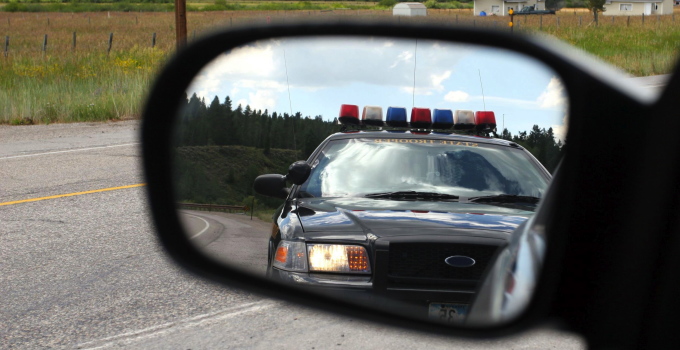
Policy Background:
In the wake of the August 9, 2014, shooting of Michael Brown by Officer Darren Wilson in Ferguson, Missouri, there has been national call for increased use of body worn cameras (BWCs) by police officers. Brown was killed by Wilson during the course of an arrest for an alleged robbery under highly disputed circumstances. And while Wilson was not indicted for his actions, the incident demonstrated the tremendous difficulties of determining crucial facts relating to use of force by police against members of the public. These difficulties lead directly to officers’ inability to completely justify righteous use of force in the realm of public perception, as well as the difficulty of holding officers accountable if force is misused.
Equipping police officers with BWCs can resolve these problems. BWCs—which are worn on the lapel of an officer’s uniform—accurately capture officers’ interactions with the public, filling in gaps in information that are ever-present when an officer’s actions are questioned. Though only a few police departments nationally have BWCs in place, outcomes in those jurisdictions demonstrate that BWCs are beneficial to officers and the public alike. In Rialto, California, use of force incidents declined by 60% and citizen complaints against officers dropped by 88% in the first year after every officer was equipped with a BWC.
Further, while there would be costs associated with providing BWCs to local police departments, as well as storing materials and reviewing footage, the research suggests that those costs would be outweighed by long-term cost-savings in the form of decreased officer liability. Each BWC costs between $200 and $1,000. However, the city of Dallas alone has paid out in excess of $6 million in settlements related to alleged police misconduct since 2011. By substantially reducing allegations against officers, and exonerating them when allegations are made, BWCs would pay for themselves over time.
Texas policy-makers should require local law enforcement agencies to apply to the state for grants to equip their officers with body worn cameras. Recognizing that every law enforcement agency is unique, each agency should also be required to develop its own policy for use of BWCs in the community; this policy should address specific domains, such as guidelines for when the camera should be on or off; provisions related to data retention, public access, and officer access; and procedures for internal oversight.
Key Facts:
- Police misconduct allegations and public distrust of police are pervasive.
There were at least 391 allegations of police misconduct filed against Texas officers in 2010, the most recent year for which statistics are available.[1] The agencies of Fort Worth, Dallas, and Galveston boasted some of the highest reported misconduct rates in the nation.[2]
According to national polling conducted between 2011 and 2014, 44% of adults do not have “a great deal” of confidence in police.[3]
- To address these problems, there is strong national support—from law enforcement and the public—for body-worn cameras (BWCs).
The Trayvon Martin and Michael Brown shootings have been a catalyst for increased accountability measures for police-citizen interactions. In December, President Obama announced support for BWCs, proposing $263 million in matched funding for local law enforcement for this purpose.[4]
Support for BWCs is bipartisan and comes from law enforcement and public watchdog groups alike. In Texas, BWCs are supported by such diverse organizations as the Houston Police Officers Union, the Texas Association Against Sexual Assault, the Department of Public Safety, and the American Civil Liberties Union of Texas.
- A few Texas law enforcement agencies have already implemented successful pilot programs for BWCs.
The Fort Worth Police Department began using BWCs in 2012 and have steadily expanded the program to include use of more than 600 BWCs today.[5] Satisfied with a pilot program of 100 BWCs, the Houston Police Department plans to equip all 3,500 officers with BWCs over the next three years.[6]
Relevant Bills:
- Bill Number: HB 455 (Johnson)
Bill Caption: Relating to a body worn camera program for certain law enforcement agencies in this state.
- Bill Number: HB 474 (Reynolds)
Bill Caption: Relating to requiring certain law enforcement officers to wear body worn cameras.
TCJE Materials: Testimony
Hearing Notice: House Emerging Issues In Texas Law Enforcement, Select Committee, Notice of Public Hearing on April 9, 2015
Archived Hearing Video: House Emerging Issues In Texas Law Enforcement, Select Committee, 04/09/15 Video [TCJE testimony begins at 01:03:00]
- Bill Number: SB 158 (author: West | sponsors: Fletcher, James White, Johnson, Koop, Reynolds)
Bill Caption: Relating to a body worn camera program for certain law enforcement agencies in this state; creating a criminal offense; authorizing a fee.
TCJE Materials: Testimony
Senate Hearing Notices: Senate Criminal Justice Committee, Notice of Public Hearing on March 24, 2015 | Notice of Public Hearing on April 7, 2015 | Notice of Public Hearing on April 14, 2015
Archived Senate Hearing Video: Senate Criminal Justice Committee, 03/24/15 Video [TCJE testimony begins at 01:14:02]
House Hearing Notice: House Emerging Issues In Texas Law Enforcement, Select Committee, Notice of Public Hearing on May 7, 2015
TCJE House Action: Card in support
Outcome: Effective 9/1/15
Relevant Media:
- Texas Observer: “Lawmakers Push for Police Body Cameras” [April 10, 2015]
- Austin American-Statesman: “Testimony suggests growing support for police body cameras in Texas” [April 9, 2015]
[1] David Packman, 2010 Police Misconduct Statistical Report, The Cato Institute, April 5, 2011; http://www.policemisconduct.net/2010-npmsrp-police-misconduct-statistical-report/
[2] Ibid.
[3] Frank Newport, Gallup Review: Black and White Attitudes Toward Police, Gallup; http://www.gallup.com/poll/175088/gallup-review-black-white-attitudes-toward-police.aspx
[4] The Hill, “Obama to Provide Funcing for 50,000 Police Body Cameras,” December 12, 2014; http://thehill.com/homenews/administration/225583-obama-to-provide-funding-for-50000-police-body-cameras
[5] Fort Worth Star-Telegram, Fort Worth Police Out in Front in Use of Body Cameras, December 2, 2014; http://www.star-telegram.com/news/local/community/fort-worth/article4364327.html
[6] Texas Observer, The Eyes of Texas: Are Police Body Cameras Inevitable?, January 16, 2015; http://www.texasobserver.org/eyes-texas-police-body-cameras-inevitable/